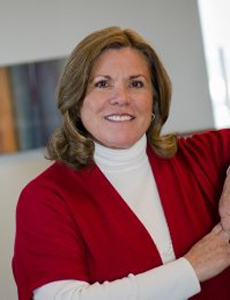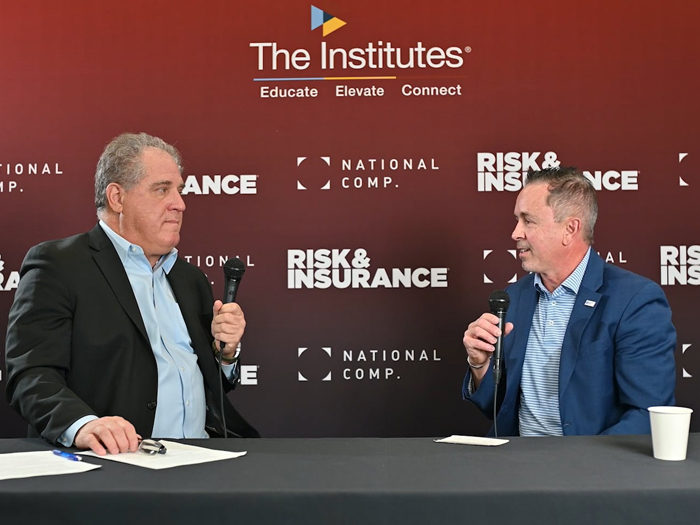Workers' Comp Profile
Insights From a Veteran Claims Manager

Jill A. Dulich wanted to be a juvenile probation officer in her hometown of San Diego. But a state hiring freeze in the mid-1970s led her instead to a job with Allstate, a company where she had worked a couple of summers.
“It was actually going to be on a temporary basis,” she said. “I thought, ‘what the heck is workers’ comp?’ I knew nothing. I was so confused at every turn.”
Fast forward some 40 years to her recent retirement from her role as senior director of claims services for Marriott, her employer for the past three decades, and Dulich sings a different tune about the industry.
“I’ve had an incredible career and met the most amazing people,” Dulich said. “It’s been a very humbling experience but very joyful and fulfilling.”
As one of the most respected claims people in the workers’ comp system, Dulich now is helping the California Self-Insurers’ Security Fund, an organization with which she’s been involved for many years.
The fund was created by the California Legislature in 1984 to handle the claims of self-insured employers who default on their workers’ comp payments.
“When an employer defaults on claims, the Security Fund is notified. We step in, and take those claims on,” Dulich said. “We have 30 days to make the payments. Since 1984 no claim has been paid late by the fund. Every injured worker has been paid — usually much sooner than that. There have never been any claims that have not been properly paid.”
WC 101
Back in the 1970s the workers’ comp system was markedly simpler than it is today. However, Dulich still follows the lessons of her early training.
“The one thing I was taught from day one is that you’ve got to maintain strong communication with the injured worker … communication was workers’ comp 101. You communicated with them every single week, sometimes daily,” she said. “If you don’t help them through the process, they are not going to know what to do and will get an attorney.”
Along with the many systemic and technological changes, Dulich says she’s seen an erosion of that idea. The injured worker has become just another person in the process rather than the one who should be the primary focus.
“That’s why there is so much litigation and adversity in the system — people forget [the injured workers] are the ones we are supposed to be taking care of,” she said. “That’s the core of workers’ comp. It’s really important that it be brought to the forefront.”
The complexities of the modern-day workers’ comp system have brought with them unintended consequences, Dulich believes. Practitioners are now extremely focused on the many moving parts.
“California is an example of how everything is so time sensitive and deadline driven. You end up with form over function,” she said. “We’ve kind of lost the humanity in the shuffle.”
System Changes
Simplifying the system might be a way to restore the humanity in the system although Dulich doesn’t expect that to happen anytime soon. However, one movement could potentially eliminate some of the excessive complexity in the system.
“I’m a proponent of an opt-out system,” Dulich said. “According to an article I read recently, in Texas 80 percent of non-subscriber workers return to work within six months and 95 percent return to work within two years. These results are far better than what you generally find in a traditional workers’ comp system. There are also advantages found in treaters that are more willing to treat in an opt-out environment due to higher reimbursement rates as well as reduced litigation due to the mandatory non-litigious dispute resolution that is contained in the ERISA plans.”
One idea being floated that she does not support is federalizing the workers’ comp system. “It’s not appropriate,” Dulich said. “You can’t squeeze a round peg into a square hole. There are staggering differences from jurisdiction to jurisdiction just in injury types.”
Dulich has overseen claims in about 20 states with a particular focus on California and the west. She says every state has unique aspects that demand differences in how the workers’ comp system operates.
“You can’t homogenize the system because you don’t have homogenous industries, demographics and constituent needs,” Dulich said. “The state legislatures are much more focused on their constituents and their economies than the non-nimble federal government could ever be.”
Technological advancements have resulted in major changes to the workers’ comp system, which Dulich sees as a positive, if done properly. “But again, I worry we are losing the humanity,” she said. “Sometimes people rely too heavily on predictive modeling and technology. I consider it a form of back seat driving. It’s easy to come in after the fact and say ‘what should have been done.’ At that point you have the benefit of hindsight. Using a program or metrics that can identify your high-risk cases early in the process does bring tremendous benefits as you can dedicate your resources to those cases that need it the most.”
For anyone new to the business, Dulich has three pieces of advice. One is to not take things personally, as the system itself causes anger and frustration. Second is the ability to multitask.
“The third thing, and most important, is listen, listen, listen,” she said. “You can get tremendous amounts of information by listening — most notably to the injured worker. Just listen.”











